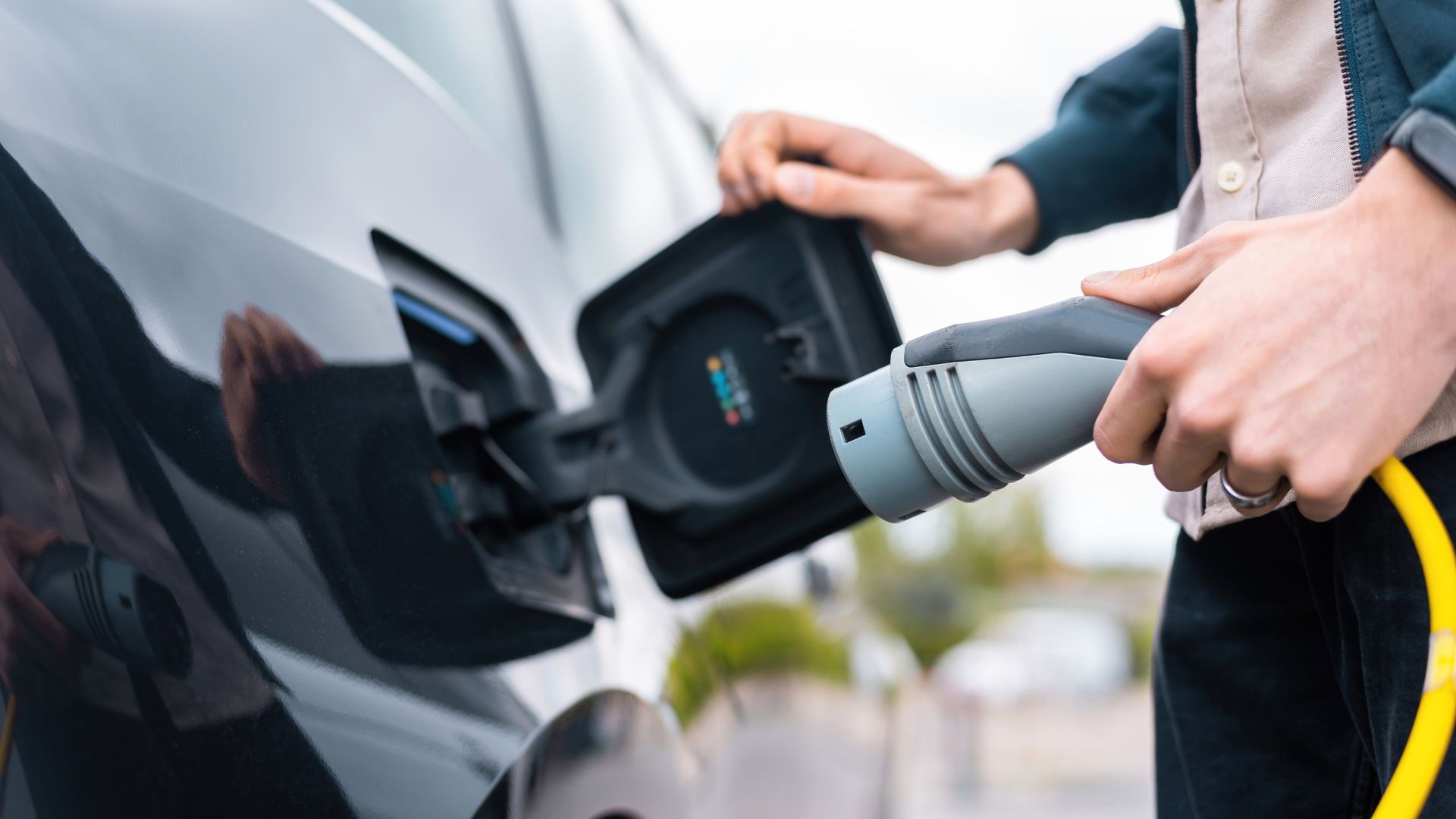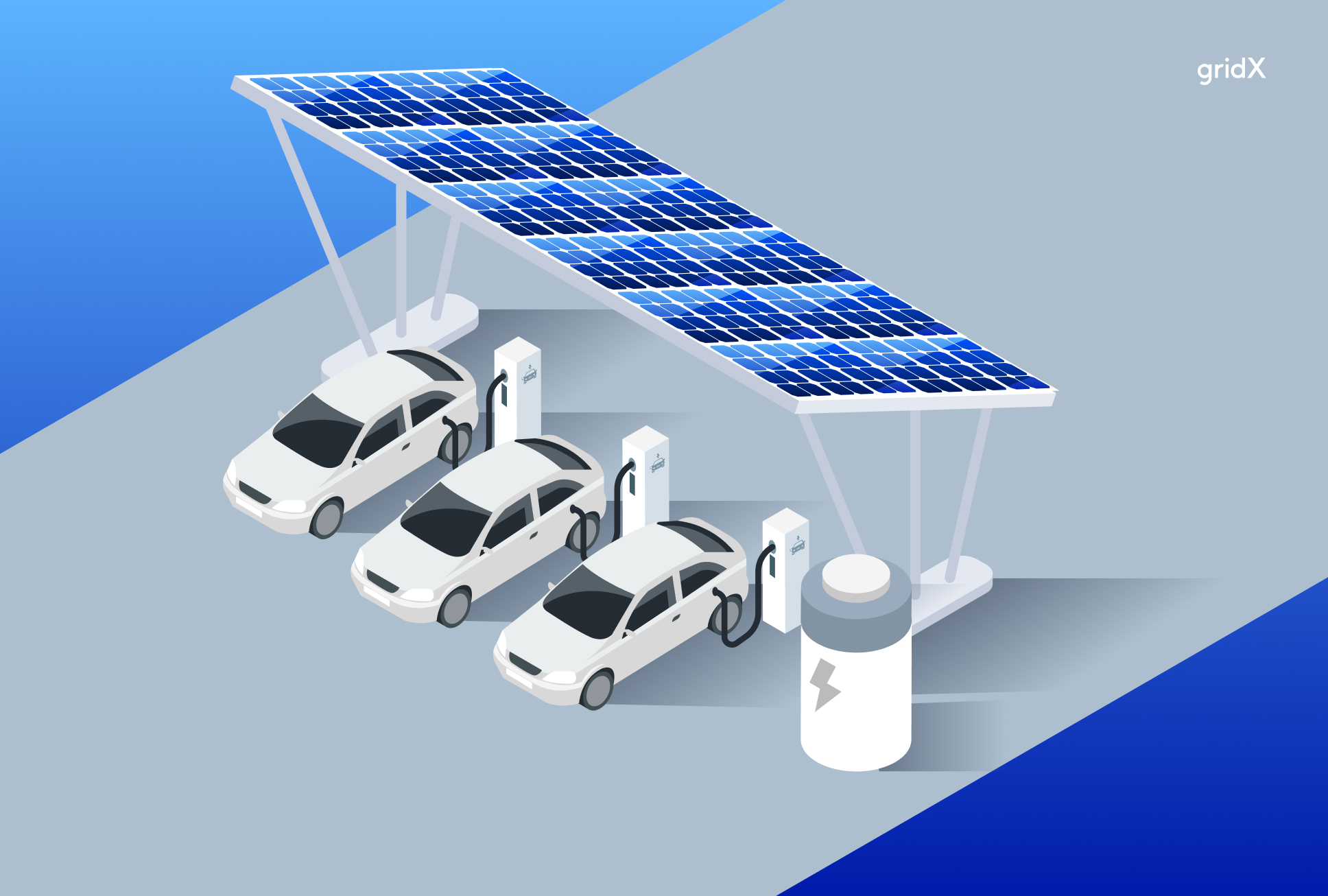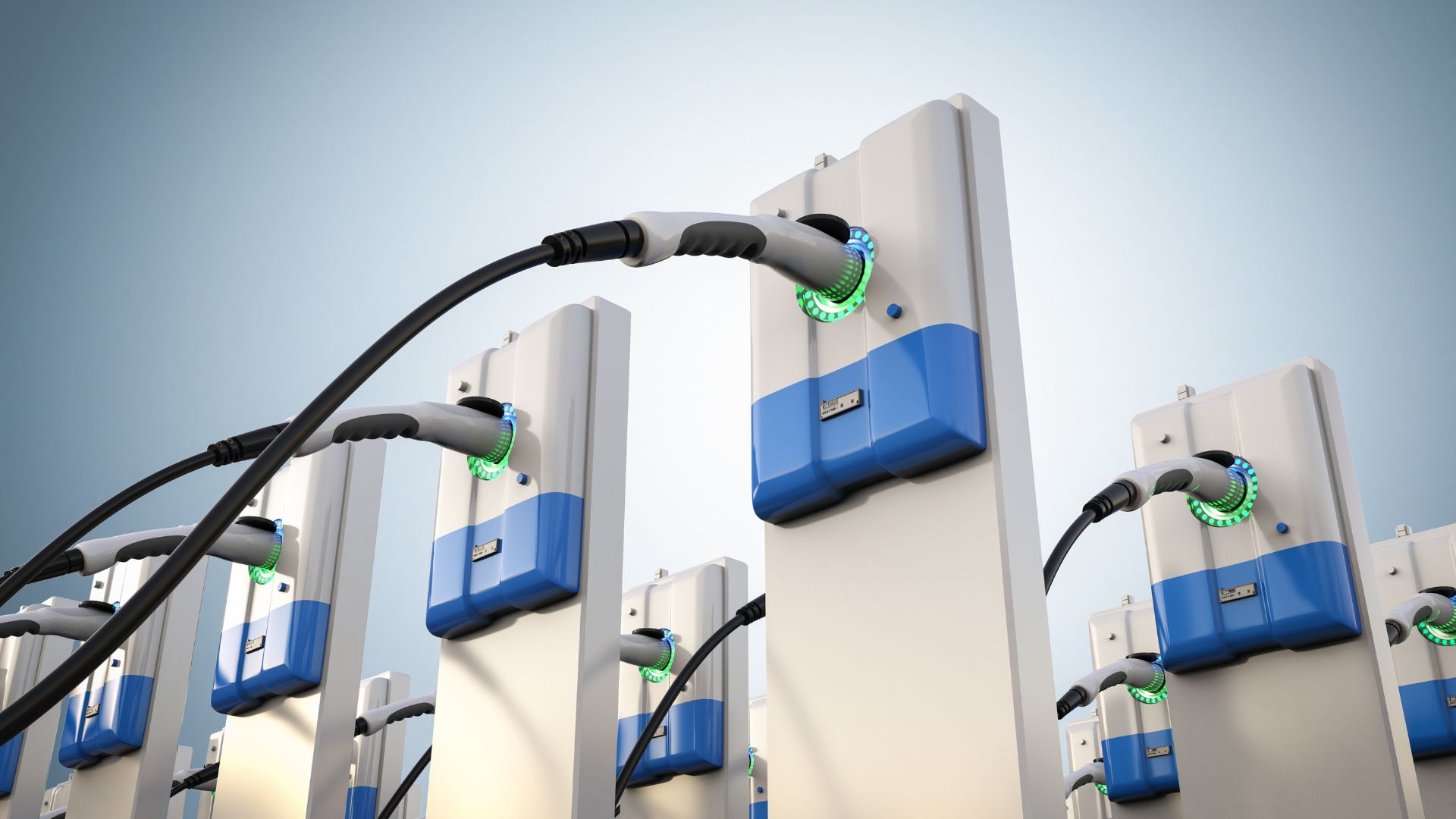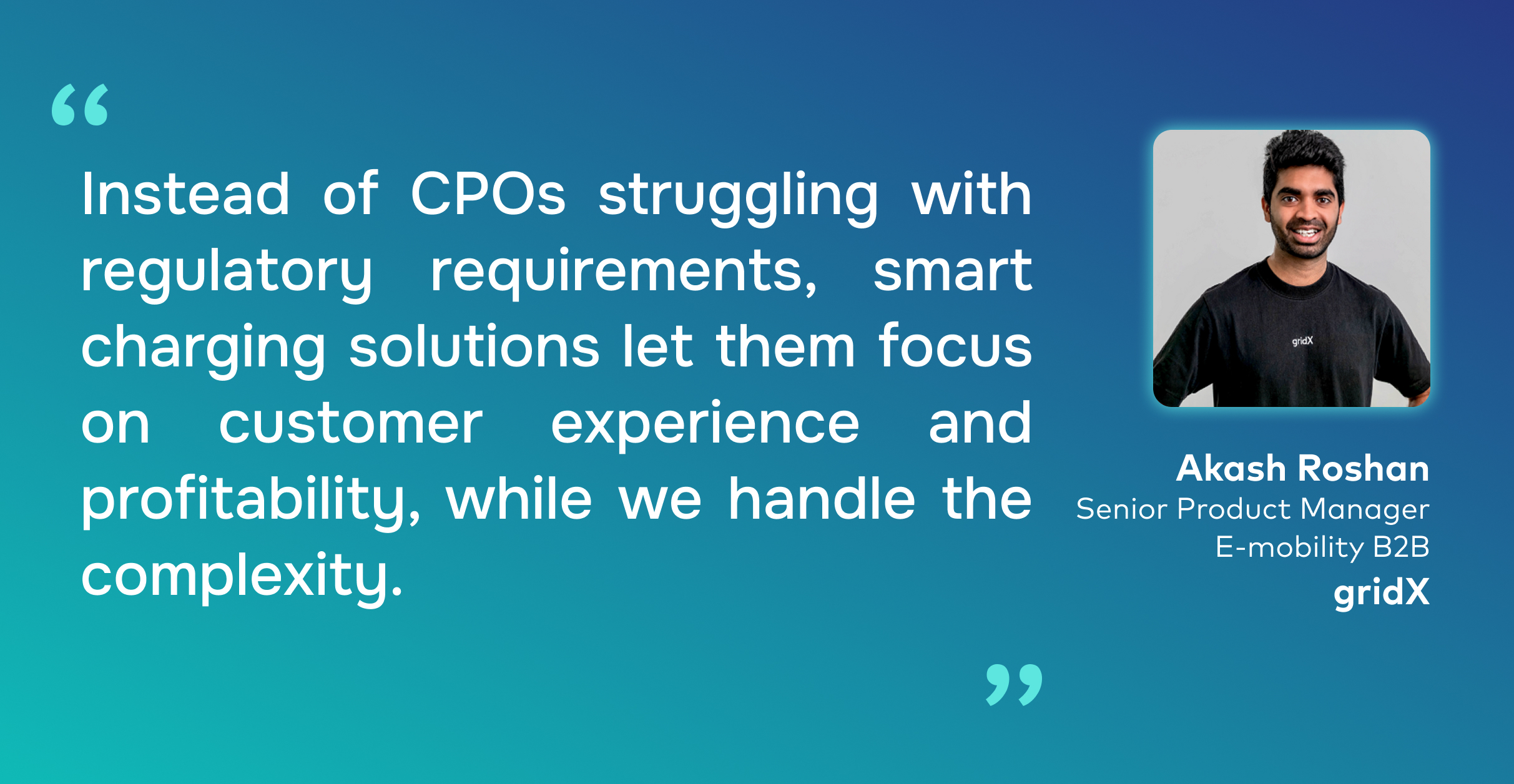As more electric vehicle (EV) chargers, home batteries, solar systems and other distributed energy resources connect to the grid, it’s getting harder for distribution system operators (DSOs) to predict demand and keep everything running smoothly. This unpredictability can put reliability at risk. Smarter monitoring and control of these assets, enabled by intelligent energy management systems, can help DSOs run the grid more reliably. On top of that, demand response programs give operators extra flexibility to balance supply and demand when it matters most. One such demand response program: DSO grid signaling.
To understand DSO grid signaling (or simply: DSO signaling), let’s first define DSO: distribution system operator. Just as traffic lights avoid congestion on the roads, ensuring the flow of cars is automatically controlled during peak periods, DSOs orchestrate the flow of electricity through the grid. And just like a traffic light signals cars to stop, slow down or drive onwards, DSOs use signaling to manage how much electricity an EV charging site imports from or exports to the grid in real time.
Far from being just a regulatory box to tick, DSO signaling and energy flexibility are enablers. For charge point operators (CPOs), they open the door to scaling faster, operating more efficiently and turning compliance into a competitive advantage. At gridX, we believe these tools are key to unlocking the next phase of e-mobility growth.
What is DSO signaling and why should CPOs care?
Think of the DSO as the traffic controller for electricity, managing the flow of power from the transmission network to homes, businesses and, increasingly, EV charging stations. Their job: ensure the paths of electrons flow in a smooth and controlled manner, preventing overloads and keeping power supply consistent and reliable.
DSO signaling is the communication channel that makes this possible. DSOs send real-time instructions, such as “reduce consumption from the grid” (yellow) or “stop PV/battery feed-in” (red) based on current congestion patterns. For EV charging, this means that when demand spikes in a certain area, the DSO can signal chargers to reduce their draw temporarily and avoid blackouts. When these signals are intelligently integrated into the system at an EV charging site and the consumption or production of each individual energy asset is holistically managed in real-time, a good EV charging experience can be maintained.
When integrated into charging operations, DSO signaling transforms EV charging infrastructure from passive power consumers into active grid-supporting assets.

The implicit flexibility of DSO signaling
The dynamic interaction between DSO signaling and grid stability is a form of implicit flexibility (i.e., the energy-consuming device responds to price signals, either manually or via a smart energy management system (EMS), enabling optimized energy usage and reduced costs). It's a subtle yet powerful way to manage loads by dynamically shifting or curtailing power (i.e., becoming a grid-supportive asset). And with a smart EMS it doesn’t negatively impact the overall charging experience for EV drivers.
From compliance to opportunity: What mandatory DSO requirements mean for CPOs
For CPOs, engaging with DSO signaling is no longer optional. Across Europe, DSOs are moving from recommendations to mandates. In Germany, for instance, Paragraph 14a (§14a) compliance is rapidly emerging as a critical regulatory requirement, particularly for both private and semi-public charging locations. This regulation mandates that charging infrastructure must be capable of receiving and responding to DSO signals, ensuring grid stability as EV adoption scales. In addition, technical standards such as VDE-AR-N 4100 or 4105 (for production, e.g., PV or battery) and VDE-AR-N 4110 (for medium-voltage connections) govern how charging infrastructure must integrate with the grid.
In the UK, requirements like ENA Engineering Recommendation G100 set out rules for importing and exporting power to the grid, ensuring stability in distributed generation and storage scenarios. These regulations may differ in scope and technical detail, but the trend is clear: signaling capabilities and flexibility are becoming prerequisites for deployment.
While these requirements may seem like hurdles, the right energy management system (EMS) turns them into stepping stones.

XENON removes the complexity
gridX’s EMS, XENON, acts as the traffic light for the DSO – taking in their signals (think of consumption limitations as road sensors for cars or feed-in limitations as pedestrian push buttons), interpreting them, and then directing chargers, batteries and PV systems in a way that ensures compliance without compromising on uptime, profitability or customer experience. Instead of CPOs wrestling with complex regulations, XENON absorbs the complexity, freeing operators to focus on what matters most: growing their networks and delighting drivers.
Batteries: The hidden ace for CPOs
Batteries at EV charging sites are opening up a host of opportunities, especially in markets where grid capacity has been pushed to maximum capacity, such as the Netherlands. Here, many EV charging sites are in need of a large grid connection point in order to service as many customers as possible, provide fast charging and not blow a fuse. Unfortunately, expanding a grid connection point is incredibly costly and time consuming, requiring physical changes to the landscape and bureaucratic processes involving permits and approvals.

Batteries, therefore, are becoming the surprise ace that CPOs didn’t know they needed.
Smartly deployed, batteries allow sites to:
- Buffer DSO signals: If charging must slow down, batteries can step in to keep EVs charging smoothly.
- Cut peak loads: By using stored power to charge EVs during high demand periods, batteries reduce grid draw and lower demand charges.
- Integrate solar PV: Store excess daytime generation and use it later, boosting self-sufficiency.
- Optimize costs: Charge when energy is cheap, discharge when it’s expensive.
Virtual grid expansion
gridX takes battery integration a step further with our virtual grid expansion feature. This innovative capability allows batteries to discharge and meet peak EV charging loads that might otherwise exceed the DSO-approved connection limits for a site. This is particularly vital in grid-constrained areas, as it enables CPOs to:
- Open new charging parks even when the physical grid capacity is limited, accelerating the rollout of essential charging infrastructure.
- Offer faster charging speeds to their customers by providing additional power beyond what the grid can instantaneously supply, ensuring a superior charging experience and attracting more drivers.
Such future-proof use cases are only possible with an EMS that integrates EV chargers, as well as batteries and photovoltaic systems into one intelligent system. XENON seamlessly integrates multiple OEMs and device types to expand charging capacity, while simultaneously minimizing costs and unlocking new value streams. A fleet management system that only focuses on EV charging is no longer sufficient for CPOs to stay competitive.
Flexibility in action: Energy management and smart charging prioritization
Much like the DSO is the traffic light for electricity, XENON is essentially energy management’s traffic light, navigating DSO signals to optimize charging operations. It offers a suite of flexible charging strategies – such as prioritized or scheduled charging – that ensure grid signals are honored without compromising the user experience.

These strategies allow CPOs to tailor charging behavior to specific site needs and business models:
- User-based prioritization: XENON’s latest feature that favors premium users or those with urgent departure needs.
- Balanced charging: Spread power evenly across all cars.
- Recurring schedule charging: Based on time periods throughout the day or week.
- Proportional charging: Each EV receives at least its minimum charging power.
- Series charging: Follows the logic of “first come, first serve”.
By intelligently mediating between DSOs and EV chargers, XENON ensures grid rules are respected while the driver experience remains uncompromised.
Tackling scalability: Standardization, interfaces and market fragmentation
One of the largest challenges in Europe is market fragmentation. Let’s take Germany as an example, where this is a particular problem as the country has nearly 900 DSOs. While the foundation of DSO grid regulations in Germany are based on VDE norms, each DSO has an additional layer of requirements that are specific to them and these are defined in their Technische Anschlussbedingungen or TAB document. Thus, it’s difficult to have one solution that meets all the regulatory requirements of the DSOs just within a market like Germany.
Here, a smart EMS can be a great benefit, especially one that is customizable to the varying requirements and protocols of DSOs. For example, such useful protocols include, but are not limited to:
- OpenADR: A widely adopted standard for automated demand response, facilitating communication between utility companies and energy-consuming devices.
- Modbus: A serial communication protocol commonly used for connecting industrial electronic devices.
- IEC 61850: A standard for communication networks and systems in power utility automation.
These allow for fast configuration per DSO without requiring bespoke development each time. CPOs can rapidly deploy and integrate new charging sites, knowing that their EMS can communicate effectively with the local DSO's specific grid signaling requirements. This significantly reduces integration complexities, accelerates time to market for new sites and provides CPOs with the agility needed to scale their operations efficiently across diverse regulatory environments, transforming what could be a bottleneck into a streamlined deployment process.
Learn more about smart EV charging and DSO signaling in 'Watt's up with energy?' featuring gridX Senior Product Manager E-mobility B2B, Akash Roshan.
Looking ahead: The role of energy flexibility in a grid-constrained future
The future of EV charging isn’t just about connecting more sites – it’s about building flexible, intelligent, grid-integrated infrastructure. Flexibility will evolve from a compliance requirement to a core business model:
- CPOs will sell services back to DSOs and TSOs.
- Batteries will become revenue-generating assets in flexibility markets.
- Smart EMS will allow CPOs to buy low, sell high and unlock new income streams by charging and discharging energy.
By embracing flexibility now, CPOs can move from being mere consumers of electricity to becoming strategic players in the energy system.

Giving the green light to e-mobility
The rapid growth of EVs undeniably strains the grid. But with the right perspective, DSO signaling and regulatory requirements are not roadblocks, they are green lights for scaling.
At gridX, we empower CPOs to navigate this evolving landscape with confidence. Our modular and adaptable solutions remove the complexity of diverse DSO interfaces, enabling scalable deployments and reducing operational headaches. Most importantly, XENON integrates electricity production, storage, AC and DC chargers from multiple OEMs, price signals, and, of course, grid signals to turn chaos into savings. We help CPOs move beyond simple compliance, unlocking the full potential of their charging infrastructure to be not just compliant, but profitable, reliable and future-proof. By embracing smart energy management and flexibility, CPOs can truly lead the charge into a more resilient, efficient, and electrifying energy future.



